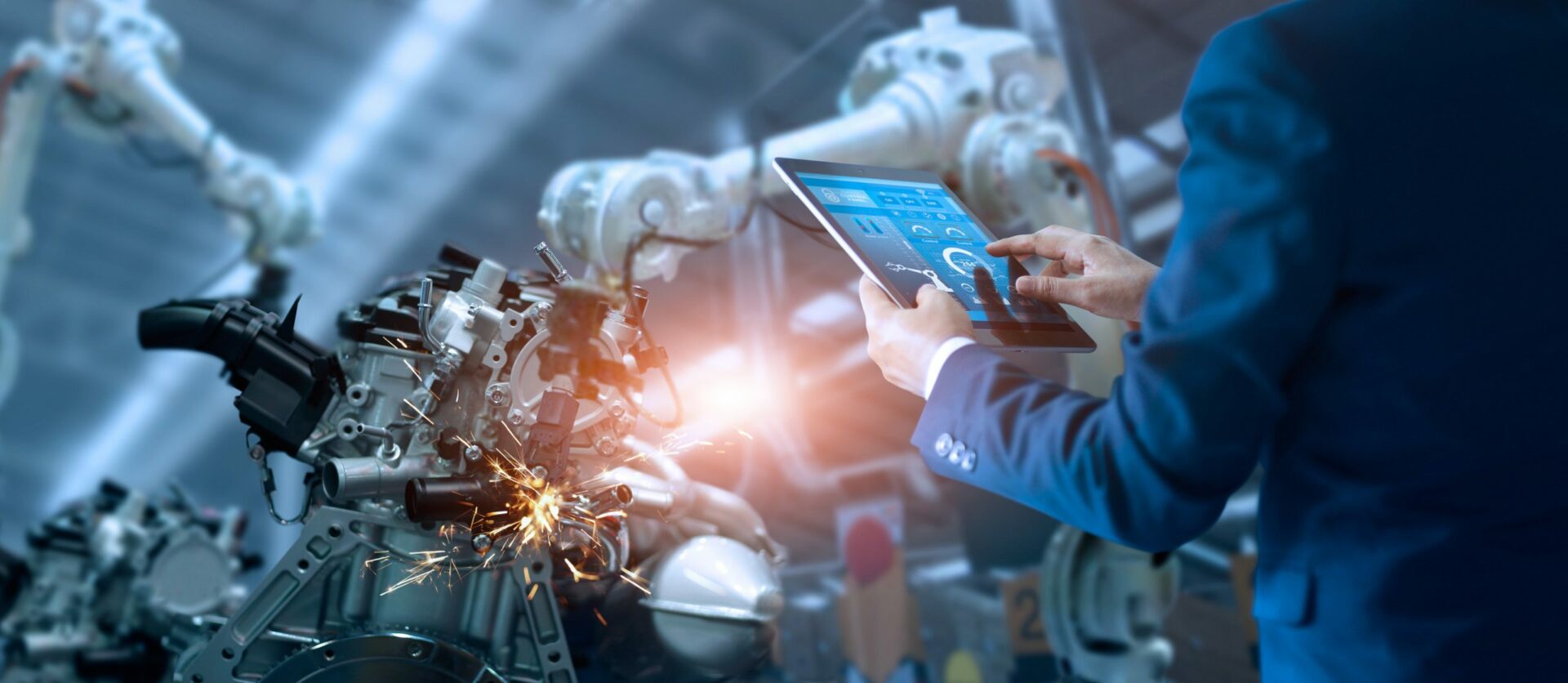THE ROLE OF INDUSTRIAL AI IN 2022


RealWear has put together a brief insight about Augmented Reality, Artificial Intelligence & the trends, predictions and possibilities relevant to these tech concepts. In this in-depth overview, we will talk about the many roles that Industrial AI has played and will continue to perform in 2022.
But first, do you know what is AI?
Artificial intelligence’s broad purpose has sparked a slew of questions and arguments. So much so that there is no commonly acknowledged definition of the field.
In a very simple choice of words, Artificial intelligence (AI) is a broad field of computer science that focuses on creating intelligent machines that can accomplish activities that would normally need human intelligence. There are four general types of Artificial Intelligence:
- Reactive Machines
- Limited Memory
- Theory of Mind
- Self-Awareness
Here are some common examples of AI that will definitely make your brain click because you witness them everyday!
- Siri, Alexa and other smart assistants
- Self-driving cars
- Robo-advisors
- Conversational bots
- Email spam filters
- Netflix’s recommendations
So How Does Artificial Intelligence Work?
Although AI is a multidisciplinary discipline with many methodologies, advances in machine learning and deep learning are causing a paradigm shift in nearly every sector of the IT industry.
DataRobot CEO Jeremy Achin quoted at the Japan AI Experience in 2017:
“AI is a computer system able to perform tasks that ordinarily require human intelligence… Many of these artificial intelligence systems are powered by machine learning, some of them are powered by deep learning and some of them are powered by very boring things like rules”.
Now let’s dive in and discuss the current roles of AI and its future potential as well as possibilities.
Industrial AI — Reshaping of Manufacturing Industry
- Knowledge automation will be accelerated as a result of generational workforce changes.
- Industrial data scientists are emerging to aid in the implementation of industrial AI strategies.
- The focus of AI investments is shifting away from general models and toward more precise industrial AI.
- Industrial AI deployments will be accelerated by executive ownership and cultural change
AI Will Help Cut Down Costs and Enable Businesses To Overcome Skills Shortage
To get more value from artificial intelligence (AI), organizations will prioritize the democratization of the technology. Data scientists are expensive and difficult to find, so organizations are looking for alternative ways to generate value from their data while resources are tight. Companies that implement built-in Automated Artificial Intelligence (AutoAI) tools will enable analysts with varying levels of experience to analyze data streams, quickly generate ML models, and find actionable insights like a data scientist would. This is helping companies increase revenues, optimize costs, and enhance operations. Moving forward, we expect others will also start to jump on this trend.”
Organizations will prioritize the democratization of artificial intelligence (AI) to obtain more benefit from the technology. Because data scientists are expensive and hard to come by, businesses are seeking for other ways to extract value from their data while resources are limited. Companies using built-in Automated Artificial Intelligence (AutoAI) technologies will be able to scan data streams, quickly construct ML models, and identify actionable insights in the same way that a data scientist would. This is assisting businesses in increasing revenues, lowering expenses, and improving operations. Others, supposedly, will begin to follow suit as time goes on.
Healthcare Industry Will Leverage AI-Driven Technology in 2022 and Beyond
Healthcare will continue to investigate the prospects for achieving the same goals as other businesses use AI and sophisticated analytics to maximize their capacity. Health-care institutions must ensure that they are investing in the correct technologies — there are many solutions available now, and painkillers, not vitamins, are required.
Because this is such a large investment, health system decision makers must ensure that AI-driven technology addresses the fundamental causes of their problems while minimizing the burden on users and IT workers and guaranteeing that this investment isn’t just trendy or buzzworthy. Simultaneously, health systems must acknowledge the value of AI and that investing in new technologies can be well worth the effort.
AI Will Gain Momentum in Cybersecurity to Detect Anomalies
Protecting networks, key infrastructure, data, and other important digital assets necessitates far more than what humans or traditional monitoring methods can provide. AI can help with anomaly detection and pattern recognition, and it can even keep up with the latest risks by scraping through news and articles on cyber hazards using natural language processing.
AI could become a vital part of Transport and Road Safety Projects
AI-enabled cameras and sensors will be put into both commercial and personal vehicles in 2022 and beyond to prevent distracted, drowsy, or impaired driving. With the passage of the infrastructure bill, which contains provisions for integrating anti-drunk driving technology into all new automobiles, this tendency will accelerate even further.
In the fleet business, technology in commercial vehicles will continue to improve, making trucking a safer and more enticing vocation, which is critical given the present driver shortage, which is further affecting supply chain operations.
Effective Supply Chains & AI
In the future, intelligent supply chain applications should become the norm rather than the exception. “From supply and demand planning to digital manufacturing and logistics, supply chains will need to be continuously changed, AI-enabled, and, most critically, future-proofed in 2022,” says Capgemini Americas’ Kurtz.
Companies Will Require Critical IT Talent To Initiate AI Projects in 2022
Processes abound, and the majority of them can be automated to boost productivity. Automation, on the other hand, as a commercial endeavor, can be overwhelming. To allow enterprises to grow their efforts, IT leaders should start small and start with a modest lighthouse initiative. This change necessitates excellent IT personnel, which many businesses currently lack due to a labor shortage. Leaders must prioritize recruiting and talent acquisition activities, but they must also create a culture that allows their employees to thrive, or they will lag behind.
Customer-facing AI will Plow ahead in 2022
AI usage in customer-facing jobs such as virtual agents increased as a result of the epidemic,” adds Joshi of Everest Group. “We’ll keep doing it, but with more maturity and more complicated use cases.”
Artificial Intelligence and Augmented Reality are definitely set out to transform Frontline Workforces, Change the way industries communicate and interact, Play key roles in decreasing costs and expansion of businesses.
RealWear is proud to be a leading organization in the field of Artificial Intelligence and Augmented Reality. RealWear’s Augmented Reality solutions like our wearable devices are a futuristic invention — Paving the path for even more innovative Augmented Reality solutions for industries across the globe.

